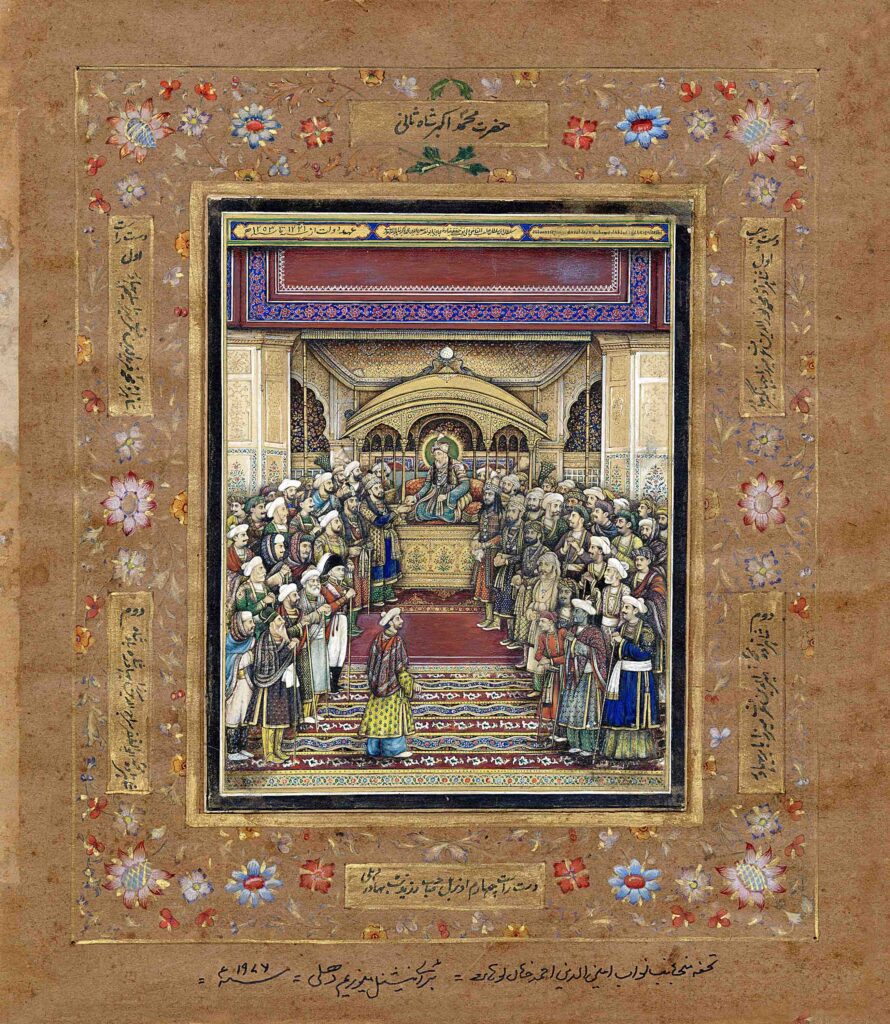A lengthy black tattoo line running from a tribal woman’s nose up to her forehead may be a mark of her caste or tribe. She is carrying a parrot in her hand. The woman is dressed in a white sari with a crimson border that is twice or three times wrapped around her waist to hide her lower body, creating the appearance of a petticoat. Her breast and shoulder are covered by the sari’s other end. Her jewellery is given special consideration, with the earrings that enlarge her earlobes standing out as the most remarkable. Earrings are also worn on the ear helix. Her large ear decorations, known as pampadam, are constructed of hollow squares and balls that are soldered together to form an abstract pattern. Women from Kondayan Kottai Maravar in Tamil Nadu are particularly known for wearing pampadam earnings. She also adorns her ankles with anklets, many necklaces, and bangles from her bajuband. This image was featured in the exhibit Company Painting: Visual Memoirs of Nineteenth-Century India, which was on display in the Special Exhibition Hall on the first floor of the National Museum in New Delhi. Fortunately, throughout the exhibition’s public viewing period from 19 April to 20 July 2022,

Shah II, Delhi, Early 19th Century, Opaque watercolour and gold
on paper, 29cm x 24.5cm, Acc.No. 76.559, National Museum,
New Delhi
I was able to visit this show twice to fulfill my need and enthusiasm for Indian art. This historical exhibition, organised by the Department of History of Art, National Museum Institute of History of Art, Conservation and Museology, and National Museum, New Delhi, attempted to display some of the finest and previously unseen paintings from the extensive holdings of five prestigious Indian museums: Victoria Memorial Hall, Botanical Survey of India, Kolkata; Archaeological Survey of India; National Gallery of Modern Art; and National Museum, New Delhi. More than 200 paintings were on show at the museum and were expertly curated by Dr. Savita Kumari (Assistant Professor, Department of History of Art, Registrar I/c National Museum Institute of History of Art, Conservation and Museology, New Delhi) and Dr. Kanak Lata Singh,(Assistant Curator, Painting, National Museum New Delhi) According to the background of the Company Painting, Numerous members of the British East India Company’s workforce relocated from England to India in the late 1700s as it increased its influence in South Asia. They wanted to snap pictures of the strange flora and fauna, magnificent historical sites, and strange new people they came across as they explored the country. They intended to send or bring these pictures back to their home countries. Travelers in the eighteenth and nineteenth centuries had to pay Indian painters to capture images, whereas current tourists would use their cameras or mobile for the same purpose. Collectively known as “Company” paintings, these painters’ creations were done in a European aesthetic and colour
To read more, subscribe to our magazine.

